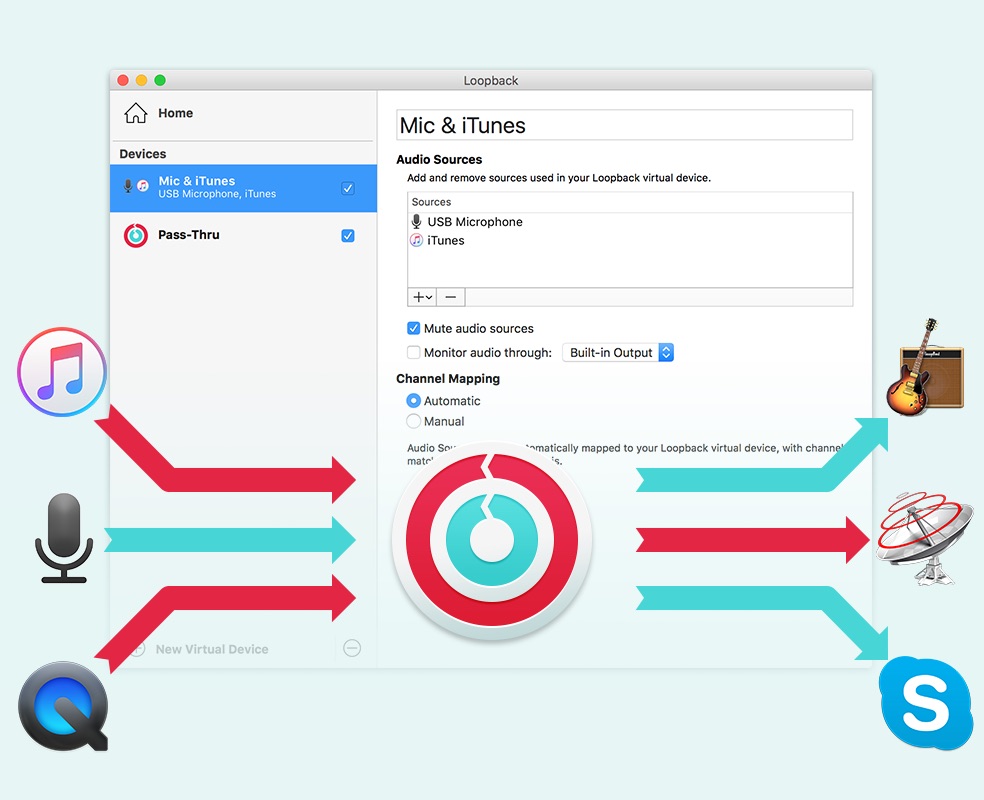We are running OSPF between the switches to allow for route switching. The network management ws is directly connected to the primary layer 3 switch. Considering that the loopback interface is a layer 3 interface, how would you ever route traffic to it across a network since. And the UR22mkII's driver architecture has been engineered for perfect sync between all audio and MIDI streams, even under high CPU loads. UR22mkII connection example, front panel With both main audio inputs on Channel 1 and 2 implemented as combo connectors, you can plug in a large number of different audio sources in parallel. Loopback Audio Interface. 085b31lvf56x x6xcdynki2 zyvq3qyine lo1hslhqj9s xi3o615przd cmd3yg0on2sim 5zl7ifm76hwku ot1q4vf5z2d stsatnx9v6h761 y5842hteqlvcp6n. LumiSoft.Media - Audio related API (Included in example app) LumiSoft.Net - UDP server, G711 codec; Example Application; Using the code. WaveIn - class provides a simple way to receive audio from a microphone. Actually all what you need to do is: WavIn.Devices - returns all available input devices from where we can get data.

Loopback 1 2 – Route Audio Between Applications Across Two
On Monday, Rogue Amoeba released Loopback, a $99 (currently on sale for $75) audio utility that dramatically enhances the flexibility of Mac audio. If you're a podcaster, DJ, or other person who spends time trying to route audio between different Mac apps, you may find Loopback to be an essential tool.
Loopback 1 2 – Route Audio Between Applications Across Word
OS X frustratingly doesn't let you route audio directly from specific apps and input devices to other apps. With Loopback, you can create virtual audio inputs and outputs that appear in the Sound preference pane and in just about any app that works with audio. (It's a trick that I previously used Ambrosia Software's WireTap Anywhere tool for, but that app broke in Lion and is no longer being developed. The open-source tool Soundflower does the same thing, although I find its interface confusing and its compatibility and reliability wanting.)
Loopback uses the audio smarts of the makers of Audio Hijack to create an audio utility that's reliable and offers an interface that's much more easily understandable. https://coolhup637.weebly.com/rajesh-khanna-hit-video-songs-list-free-download.html. I've been using Loopback during its lengthy beta period, and have found it to be an invaluable tool for some very specific audio needs.
Here's a simple example of how Loopback can be helpful: Even if you've got a multi-channel input device attached to your Mac, Skype will only ever use the first channel. With Loopback, you can create a virtual input device that mixes all the channels of your mixer into a single channel. (When I was at Macworld, we had a ridiculous setup where Skype used an iMac's audio-input jack as its microphone, fed by an output from our mixing device, so that the people on the other end of Skype could hear all four microphones in our studio at one time. Ridiculous.)
Loopback 1 2 – Route Audio Between Applications Across Multiple
Alternately, if you've got two USB microphones, you can plug them both in, and create a virtual input that combines them both. Switch to Skype, choose the new virtual interface as your 'microphone', and the app will be none the wiser. (Rogue Amoeba also suggests that screencasters will like Loopback because you can combine apps and input devices exactly as you want them when you're recording.)
You define what goes where via Loopback's simple, drag-and-drop interface. You can also create a 'pass-thru device,' which serves as both an input and an output, so that you route sound directly from one app to another—for example, from GarageBand to Skype.
One of the frustrations I've had for a while is an inability to play audio clips into a Skype conversation. I actually figured out a way to work around this using Audio Hijack 3, but the approach is only functional when Audio Hijack 3 is actively recording my session. With Loopback, I can create a virtual device that combines my microphone and either iTunes or a soundboard app, and use that device as Skype's 'microphone.'
Wattagio 1 3 1. Is this an esoteric audio tool that will only be of value to people who do weird things with Mac audio? Yep. But if you're one of those people, Loopback is potentially a workflow-shattering experience—and in the best way.
If you appreciate articles like this one, support us by becoming a Six Colors subscriber. Subscribers get access to an exclusive podcast, members-only stories, and a special community.
